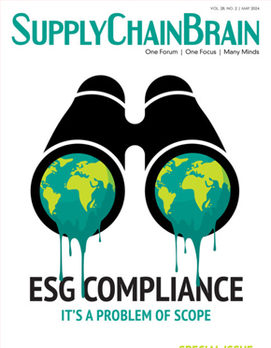
Once upon a time, there was Clorox bleach: one product, one universally recognized brand. Now there's Clorox Germicidal, Concentrated, Splash-less, Stain Remover, Outdoor, not to mention a raft of other products manufactured by The Clorox Co.: Pine-Sol, Tilex, Liquid Plumr, Glad, 409 "¦ you get the idea. We're in that modern-day zone of retailing chaos known as SKU proliferation.
You can debate the reasons for the trend: the emergence of big-box stores, with acres of shelf space begging to be filled; the pressure on consumer packaged goods makers to differentiate their brands in a crowded marketplace, the desire of consumers for products that cater to their unique tastes. Whatever the drivers might be, CPG companies are in a bind: they need a coherent way to plan, make and track the performance of an ever-growing number of items.
Most big manufacturers consist of a series of disjointed functions that are difficult to coordinate. There's a crying need for the commercial and supply-chain organizations to work more closely together. Hence the concept of, in Clorox's words, "value-chain" segmentation.
About 98 percent of supply-chain leaders conduct some level of segmentation, although the word can mean many different things, said Dave Powell, a partner in the Consumer Goods Practice of A.T. Kearney, Inc. He was joined by Mark Hersh, director of supply chain strategy with Clorox, at a recent meeting of the San Francisco Roundtable of the Council of Supply Chain Management Professionals.
Segmentation can be based on product family, region or customer, said Powell. But its ultimate intent is to foster efficiency across the organization - pursuing the goal of a true end-to-end supply chain.
In the CPG world, he said, studies show that proper segmentation can achieve reductions of more than 20 percent in commercialization lead time, up to 5 percent improvement in unit-fill rate, and better than a 5-percent increase in aggregate net contribution across the portfolio.
"Value-chain segmentation is a means to not only manage, but capitalize on, increasingly complex product portfolios and markets served," Powell said.
Clorox, in a bid to become more demand-driven, began pursuing segmentation in a serious manner about five years ago, Hersh said. Its supply-chain redesign effort started at the business-unit level, with the goal of expanding to the North American supply network and, by 2020, to the global organization. Along the way, the company has adopted a multi-pronged strategy that addresses customer service, sales growth and the elimination of waste.
Each of Clorox's products were assigned to one of four categories: new, base-flexible, base-low cost, and value-add. Each entailed striking a different balance among speed, service and cost. "Base" products, for example, needed to be consistently available, while "value-add" might entail short-term items with a heavy promotional budget.
In essence, Clorox was creating four separate supply chains to handle the complexity of its product portfolio. To decide which was the appropriate one for a given item, it applied four criteria: the product's lifecycle, promotional activity, gross margin and demand predictability.
It then mapped all products to a six-box graph, with the "X" axis representing growth and the "Y" market economics, going from low to high in each case. By placing its products on the proper location on the grid, the company could clearly demonstrate how each should be treated from a supply-chain perspective.
Business-unit leaders were asked up front to declare what mattered most about their products, whether it be innovation, cost or service. "Everything" was not an acceptable answer. "You've got to make choices," said Hersh. "We have spirited conversations with those leaders before we start."
The evaluation process gets refreshed yearly. According to Hersh, the exercise helps Clorox to formulate a long-range strategy, looking three years out, for each product. The answers affect such capabilities as sales and operations planning, route to market, speed of innovation, product customization, asset flexibility, information flow, partner collaboration, metrics, capacity planning and cycle times.
As an example, Hersh cited Glad Products Co., which Clorox acquired in 1999. There were four product segments to consider - trash bags, food-storage bags, wraps and containers - as well as a number of regional business units.
The whole portfolio was subject to increasing cost pressures and market volatility. Clorox deployed its four criteria for determining the correct segmentation strategy, while revealing capability gaps in the existing supply chain.
The exercise included soliciting the voice of the customer - a necessary if obvious move for any company looking to become more customer-focused. "We capture that information as part of the discovery work we do," said Powell.
Hersh said Clorox is still working to obtain the capabilities needed to support the various "value-chain" segments of the Glad product family. "We're on a journey," he said.
Powell said the initiative goes far beyond the simple desire for efficiency. It recognizes the key differences among various product types, and acknowledges the complexity that's inherent in just about any CPG environment today.
The effort has helped Clorox to bridge the "language gap" between sales and marketing and the supply chain. Said Hersh: "You need to create a succinct "˜elevator' speech to explain segmentation in terminology that people understand."
Product segmentation is, of course, just one piece of the puzzle that leads to optimizing supply-chain performance. Clorox has a similar model for segmenting customers, although it prefers not to share the details of that sensitive exercise. It's also reaching out to potential partners, including third-party advisers, peer companies and service providers, for guidance on how to proceed. But the very act of acknowledging the challenge of SKU proliferation, then doing something concrete about it, is a big step forward for any CPG producer today. Complexity doesn't have to equal chaos.
Keywords: supply chain, supply chain management, supply chain planning, SKU proliferation, retail supply chain, Clorox Co.




.jpg?height=100&t=1715228265&width=150)


